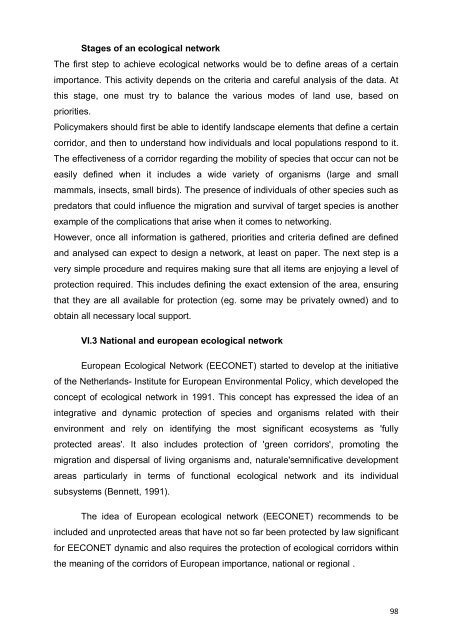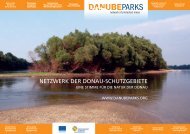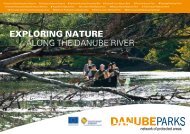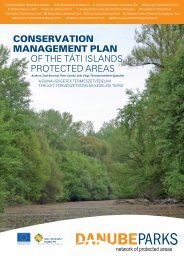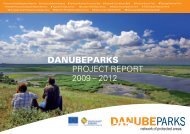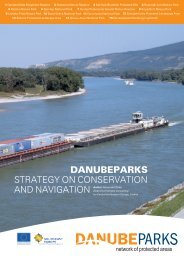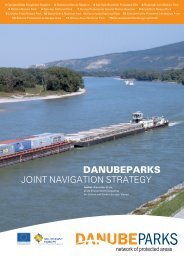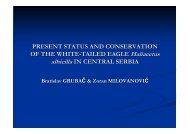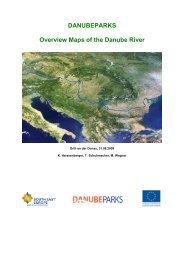Danube Rivers Morphology and Revitalization - DANUBEPARKS
Danube Rivers Morphology and Revitalization - DANUBEPARKS
Danube Rivers Morphology and Revitalization - DANUBEPARKS
Create successful ePaper yourself
Turn your PDF publications into a flip-book with our unique Google optimized e-Paper software.
Stages of an ecological networkThe first step to achieve ecological networks would be to define areas of a certainimportance. This activity depends on the criteria <strong>and</strong> careful analysis of the data. Atthis stage, one must try to balance the various modes of l<strong>and</strong> use, based onpriorities.Policymakers should first be able to identify l<strong>and</strong>scape elements that define a certaincorridor, <strong>and</strong> then to underst<strong>and</strong> how individuals <strong>and</strong> local populations respond to it.The effectiveness of a corridor regarding the mobility of species that occur can not beeasily defined when it includes a wide variety of organisms (large <strong>and</strong> smallmammals, insects, small birds). The presence of individuals of other species such aspredators that could influence the migration <strong>and</strong> survival of target species is anotherexample of the complications that arise when it comes to networking.However, once all information is gathered, priorities <strong>and</strong> criteria defined are defined<strong>and</strong> analysed can expect to design a network, at least on paper. The next step is avery simple procedure <strong>and</strong> requires making sure that all items are enjoying a level ofprotection required. This includes defining the exact extension of the area, ensuringthat they are all available for protection (eg. some may be privately owned) <strong>and</strong> toobtain all necessary local support.VI.3 National <strong>and</strong> european ecological networkEuropean Ecological Network (EECONET) started to develop at the initiativeof the Netherl<strong>and</strong>s- Institute for European Environmental Policy, which developed theconcept of ecological network in 1991. This concept has expressed the idea of anintegrative <strong>and</strong> dynamic protection of species <strong>and</strong> organisms related with theirenvironment <strong>and</strong> rely on identifying the most significant ecosystems as 'fullyprotected areas'. It also includes protection of 'green corridors', promoting themigration <strong>and</strong> dispersal of living organisms <strong>and</strong>, naturale'semnificative developmentareas particularly in terms of functional ecological network <strong>and</strong> its individualsubsystems (Bennett, 1991).The idea of European ecological network (EECONET) recommends to beincluded <strong>and</strong> unprotected areas that have not so far been protected by law significantfor EECONET dynamic <strong>and</strong> also requires the protection of ecological corridors withinthe meaning of the corridors of European importance, national or regional .98


